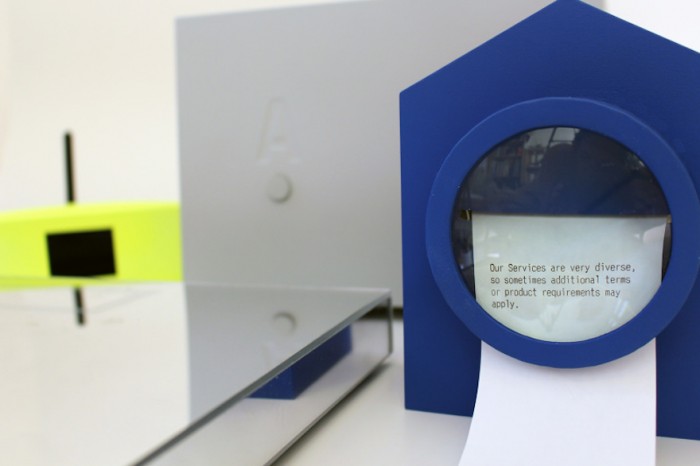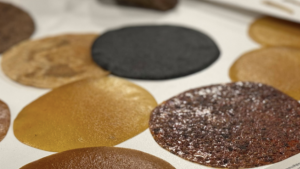In August this year, we explored a short film titled Uninvited Guests. Created by London-based design agency Superflux, the film follows 70-year old Thomas, a man surrounded by interconnected smart devices that track his eating, sleeping and exercise habits to the point that he is controlled by the Internet of Things (IoT) in his home. Taking this theme a step further, design researcher Iohanna Nicenboim's MA project at the University of the Arts in Berlin looks at the near future, a dystopian reality in which we become the objects in the interconnected realm of Things.
“As this technology has the potential to influence many aspects of our lives, it can also impact on the way we perceive objects, as well as ourselves,” she told ThingTank, an IoT research project. “I think it is important to develop tools for addressing the Internet of Things in a critical way, as they could help us to identify and reflect on some of the challenges we might face in adopting this technology”.
To better study the possibilities of IoT, Nicenboim designed four fictional prototypes. First, she questioned what would happen if the objects in our homes could collect data and use us as subjects in their experiments.

“This idea is based on the fact that digital services do experiments on their users today: for example, Facebook and OkCupid did such experiments, where they manipulated the information they showed to people, in order to see their reaction,” Nicenboim explains. “So the scale is doing something similar: it manipulates slightly the weight shown to us, and analyses our tendencies over time to gain or lose weight, in relation to the feedback we received.”
Next, Nicenboim looked at the terms and conditions or the section we usually ignore when installing a new app or activating a new device. She asks, What would happen if our physical day to day objects required permissions? What would the terms and conditions be in your home?

“In order to show this issue, I have created a printer, which automatically prints the terms and conditions of every device that connects to your network. As the printer has no accept or reject button anymore, it points at some of the challenges we might encounter in the adoption of pervasive technologies in the home,” she says. “Thus, the artefact serves as a tool to discuss the conditions in which we want to adopt technology in our lives.”
The third prototype, the Correlation Display is based on the fact that when objects get connectivity, we can do more than just analyse the data they collect: we can start comparing multiple data sources and find interesting patterns and conclusions.
Nicenboim calls this a poetic approach to data: “This speculative device uses the data of all the objects in the house, correlating them with local and global patterns. Using local data it can find for example a correlation between your coffee intake and your sleeping patterns. Using global data, it can find that your potato chips consumption is correlated with the hunger in the world.”
Like most of our current technologies, the Correlation Display will use the patterns it discovers to sell advertising space.

Finally, The A/B Toaster appeals to our need to automate our preferences using technology. It’s a smart toaster that tries to find the perfect toast using a simple A/B test.

“The idea with this dystopian object is to explore how the current models of our online practices could look like if translated into physical objects. This device is a comment on the "Premium" model we use for digital services today, in which value is built on the basis of learning our preferences, and it is "sold" to us later on,” says Nicenboim. “By showing some of the challenges we might encounter in the IoT, this artefact serves as a tool to discuss the conditions in which we want to adopt this technology in our lives.”







